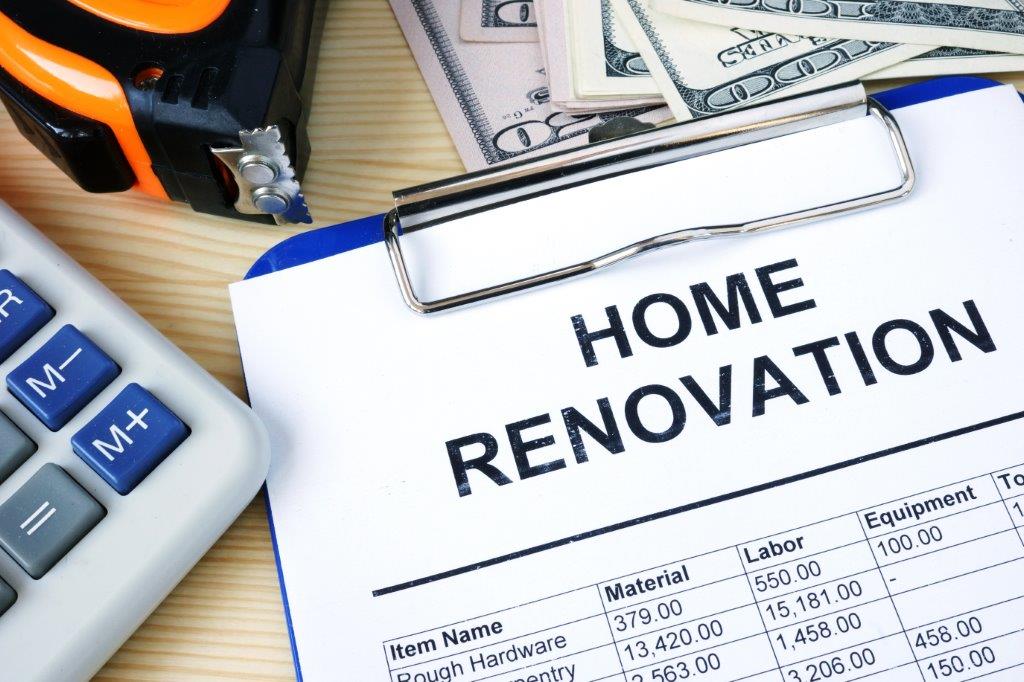
Most people approach a home renovation project with a bid, proposal, or firm idea of what the cost is going to be before getting started, but that expense can be rather reasonable depending on what needs to be done.
Don’t misunderstand the budget
While having a reasonable, to even a sizable, budget to allocate to aging in place improvements will facilitate many important changes and accommodations for people, many of those changes and improvements can be done far less elaborately and therefore less expensively than one might have contemplated. Who doesn’t remember their first apartment or college dormitory where they took concrete blocks and a few boards to create makeshift bookcases that performed quite well and were indestructible?
Or, the door across 2 file cabinets, or sawhorses that made a handy desk? A bean bag chair?
Having a healthy budget is fine, but so is creativity that provides an equal amount of function.
The budget does not need to be a hurdle
There are two ways to approach a budget for a home renovation project – what absolutely needs to be done from a safety standpoint and what would look good once it’s done. While not mutually exclusive – a renovation largely based on safety needs can look quite attractive – a design that is worthy of a feature on a design website or television episode isn’t necessarily required.
For people who can afford or want to make a statement, a more elaborate or inclusive budget is desirable. However, for those who want to improve the way their home allows them to function within it and want the most they can get for a very reasonable sum, that is doable also.
Budget is a word that seems like the elephant in the room, but it is just a guide. It represents how we are going to achieve the net result for our clients and give them an idea of what their expenditure is going to be. Unless it is a structural element that requires immediate attention, there generally are several ways to address and approach a particular renovation concern.
Budget is a working guide
For most purchases that a person makes, budget, or an idea of what they are prepared to spend for something, is a fluid and adjustable item. Partly it is governed by need, and party by desire. For a person attending a sporting event or taking a hiking adventure, they can’t always be as picking or price-conscious as would be the case with plenty of choices. There may be only one store and a limited selection at that. Sometimes, we will pay considerably more for something just because we need it.
While. we’re not suggesting that someone should consider paying more than they are comfortable in investing to get a bathroom remodel because their current one just doesn’t work, and it had risen to the level of “must be done,” people need to investigate with their contractors the various ways to approach a situation – from simple to top-of-the-line, from modest, to top-drawer.
Consider alternatives to achieve a desirable result
Thinking back to have we decorated that first apartment or college dorm room, we did what we needed to do at the time. We didn’t have a lot of resources available to us, or we needed something temporary that was still functional.
Knowing that many seniors are living on fixed incomes, that many families have been impacted by layoffs or reduced hours from the COVID, and that some people just can’t rationalize an expenditure for themselves even though it seems to be indicated by their situation, we need to be sensitive to creating solutions that meet the intended purpose or solve a need without necessarily being a more expensive way of accomplishing the same thing. When simplicity will do, and function does not suffer, many of our clients are going to be well served and appreciative of what we can do for them.
Some people are very comfortable investing a reasonable amount (up to “whatever it takes”) to get the renovation or improvement they need. Others are going to be less inclined to spend much. We have to ask ourselves if someone is risking injury by not having us help them and then look at creative, and less expensive, ways of creating what they require.
In the end, a budget is an agreed-upon number between us and the client of what is going to be included in the job and for how much. Once we agree on that, we can proceed.
